15 Breathtaking Natural Wonders Around The World And How To Visit Them
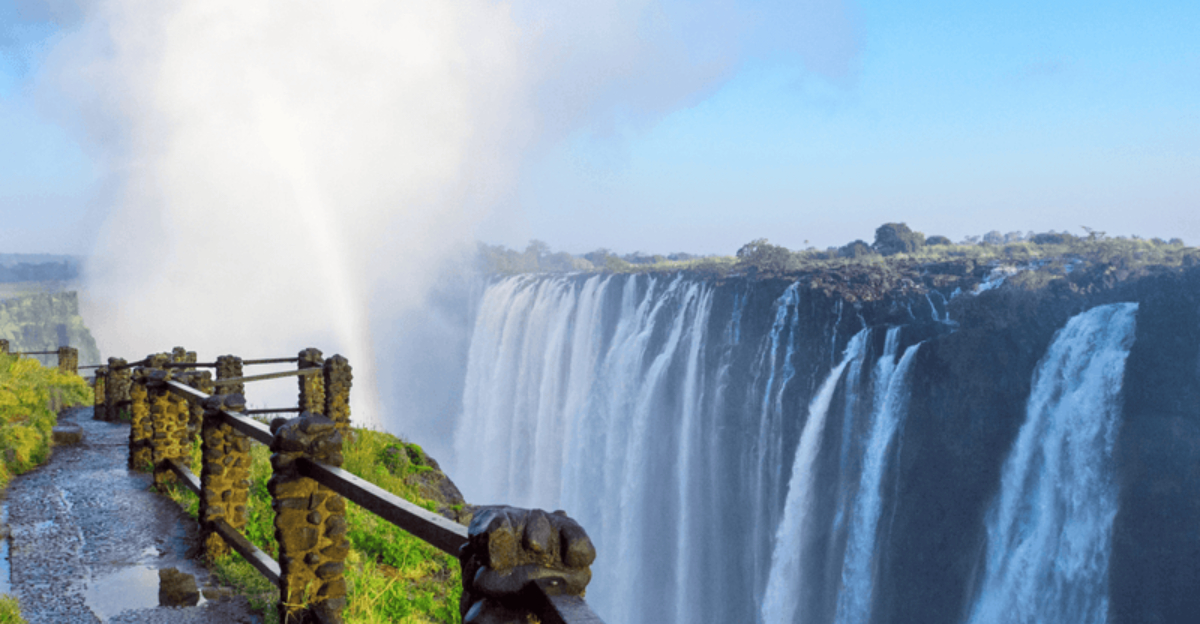
Ready to be awe-inspired? Our planet is home to natural wonders that seem almost too incredible to be real. Mountains, waterfalls, caves, and coral reefs…
These places offer adventures and memories that will last a lifetime. Whether you’re a seasoned traveler or dreaming of your next getaway, discover where these wonders are and how you can experience their magic firsthand.
Let’s turn into Dora the Explorer for a moment, grab your backpack and map, because we’re about to dive into nature’s most spectacular masterpieces! Are you ready to explore? Vámonos!
1. Grand Canyon: America’s Magnificent Chasm
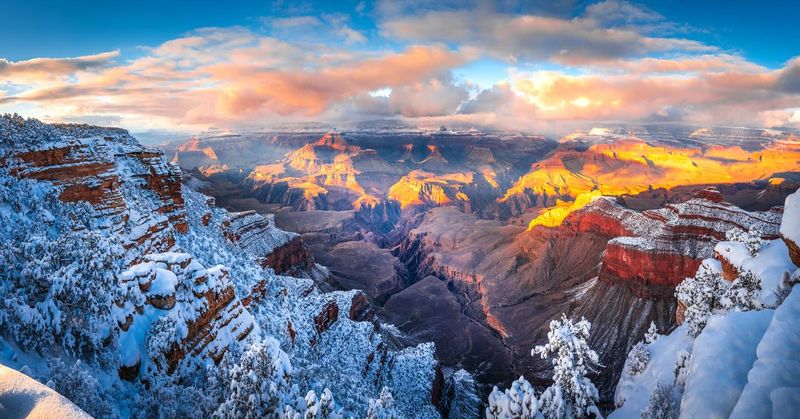
Standing at the rim, your breath catches as golden sunlight illuminates a seemingly endless maze of rock layers stretching toward the horizon. This massive gorge, carved over millions of years by the persistent Colorado River, plunges more than a mile deep.
Visit during spring or fall for ideal temperatures and fewer crowds. The South Rim offers the best facilities and viewpoints for first-timers, while adventurous travelers can hike to the canyon floor or take a rafting expedition through its heart.
2. Great Barrier Reef: Australia’s Living Treasure
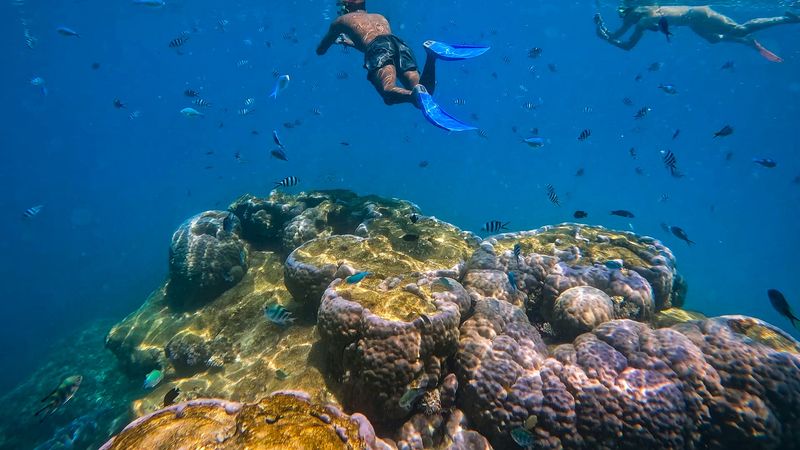
Ready to explore the underwater city? Beneath crystal-clear waters lies a world where thousands of fish species dart through coral structures in every color imaginable.
Spanning an area so vast it’s visible from space, this living marvel includes nearly 3,000 individual reef systems and hundreds of tropical islands.
Cairns serves as the gateway to this marine area. Snorkeling tours offer casual explorers views, while certified divers can venture deeper into the reef’s treasures.
For the best experience, visit between June and October, when water visibility peaks and dangerous jellyfish are less common.
3. Mount Everest: The World’s Ultimate Summit
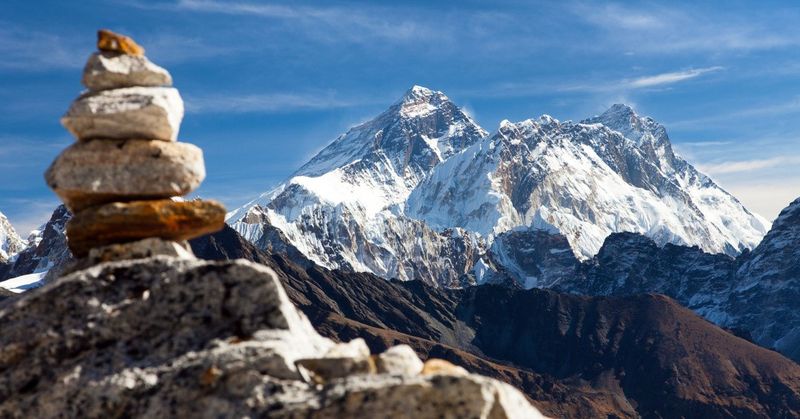
Piercing the sky at 29,032 feet, this giant represents humanity’s ultimate climbing challenge. Local Sherpas call it Chomolungma, “Mother Goddess of the World,” a fitting name for a peak that has both inspired and claimed hundreds of climbers.
For non-mountaineers, the Everest Base Camp trek offers an accessible adventure. The two-week journey through Himalayan landscapes culminates at 17,600 feet with mountain views. April-May and October-November provide the best weather windows for trekking and climbing expeditions.
4. Northern Lights: Nature’s Celestial Light Show
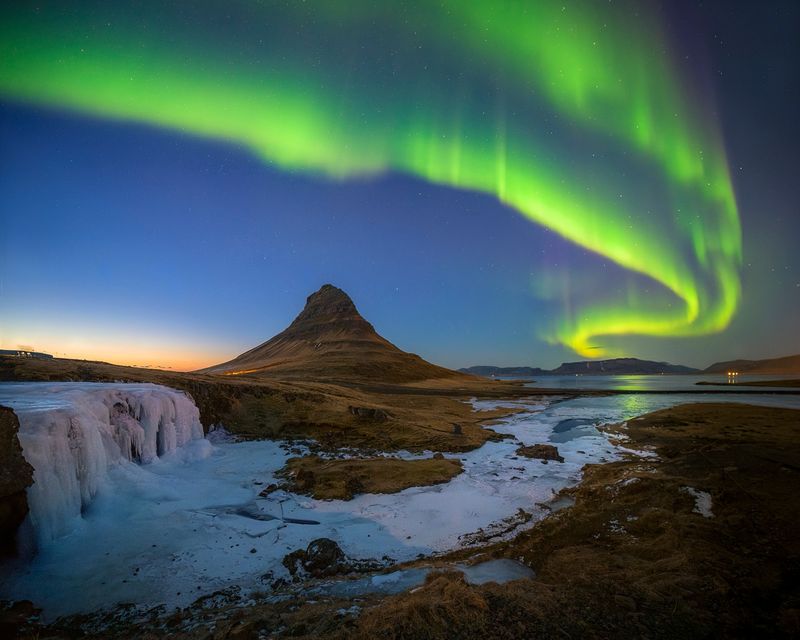
Ready to see the sky put on its own light show? Green and purple ribbons dance across the night like an invisible cosmic artist painting a masterpiece.
This otherworldly phenomenon happens when solar particles collide with atmospheric gases, creating luminous displays that have aurora-ed humans for millennia.
Prime viewing spots include northern Finland, Iceland, Norway, and Alaska. September through March offers the darkest skies for the best aurora-tunity. Book accommodations with wake-up calls for the lights, or join specialized photography tours to capture the magic.
Just remember, patience is key, because sometimes the best shows happen after midnight.
5. Salar de Uyuni: Bolivia’s Surreal Salt Desert
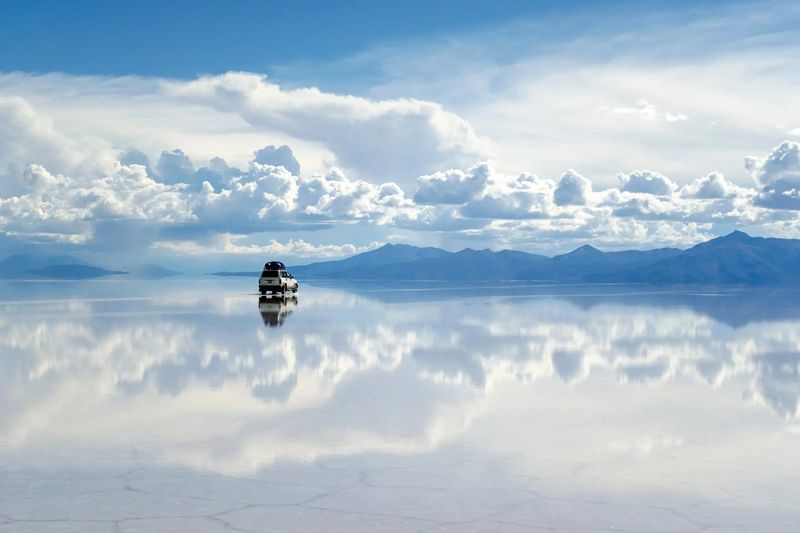
Stretching endlessly toward the horizon, this blindingly white landscape creates the world’s largest natural mirror when a thin layer of water covers its surface. Hexagonal salt patterns create a surreal geometric canvas spanning over 4,000 square miles in the Bolivian Altiplano.
But how do you experience this otherworldly scene up close? Jeep tours from the town of Uyuni provide the primary access to this alien landscape.
Visit during December-February (rainy season) to witness the mirror effect, or during dry months to explore more extensively. Pack sun protection, the combination of high altitude and salt reflection creates intense UV exposure.
6. Amazon Rainforest: Earth’s Magnificent Lung

Mist rises from a canopy stretching to the horizon as macaws screech overhead and creatures rustle in the undergrowth. This ecosystem spans over 2 million square miles across nine countries, hosting one-tenth of known species and producing 20% of Earth’s oxygen.
Eco-lodges in Brazil, Peru, and Ecuador offer experiences guided by experts about this rainforest.
The dry season (June-December) brings easier hiking and clearer trails, while the wet season shows fuller rivers and waterfalls.
Choose responsible operators who support conservation and honor indigenous communities who have protected these forests for generations.
7. Halong Bay: Vietnam’s Mystical Seascape
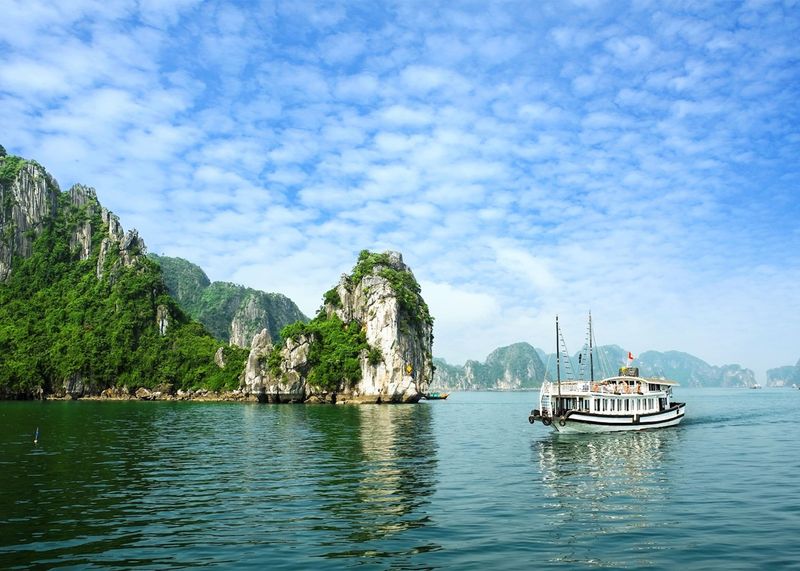
Limestone giants rise from emerald waters, creating a landscape that seems plucked from a fantasy novel. Nearly 2,000 islands and karst formations create a maze-like seascape where fishing boats drift between towering rocks draped in lush vegetation.
Interestingly, some of these limestone pillars are over 500 million years old, making them some of the oldest natural formations in the region.
Overnight cruises offer the most complete experience, allowing visitors to see sunset and sunrise over this UNESCO site. October-April provides comfortable temperatures and clearer skies. Beyond typical cruise routes lie less-visited areas like Bai Tu Long Bay, offering similar scenery with fewer tourists.
8. Antelope Canyon: Nature’s Sandstone Sculpture Gallery
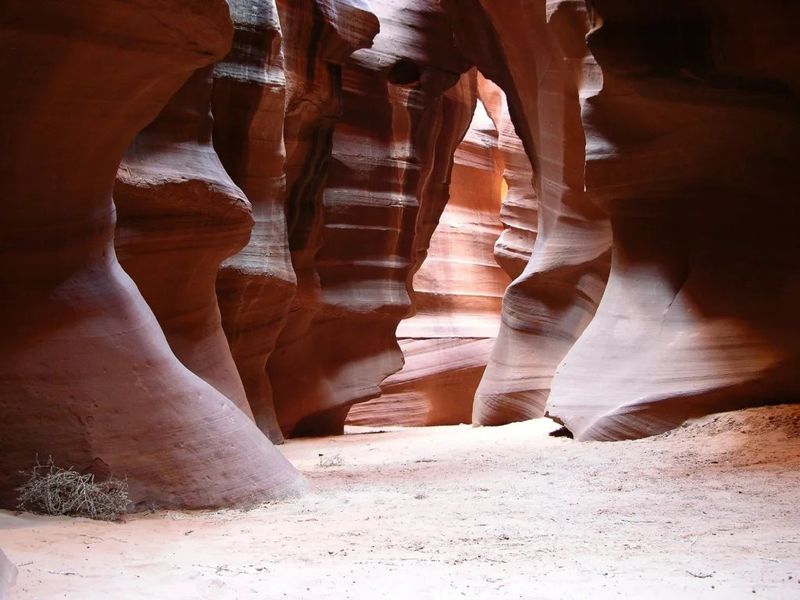
Sunbeams pierce narrow openings above, creating light shafts that illuminate swirling sandstone walls in shades of orange, pink, and purple. Carved by flash floods over millions of years, these slot canyons on Navajo land feature smooth, flowing formations that seem almost liquid despite their solid stone nature.
Located near Page, Arizona, the canyon has Upper and Lower sections, each with distinct characteristics. Guided tours are mandatory and should be booked months in advance.
Visit midday (especially April-September) when light beams create the most dramatic effects. Photographers should consider specialized photo tours that allow for tripods and longer stays.
9. Victoria Falls: Africa’s Thundering Curtain
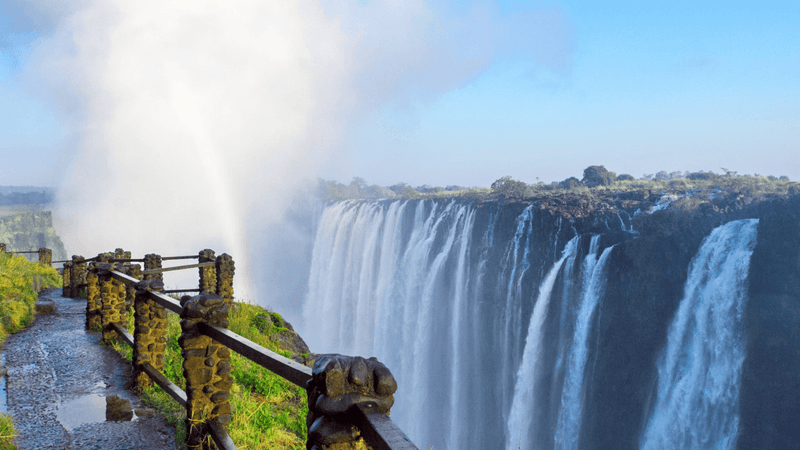
Locals call it “Mosi-oa-Tunya”, the smoke that thunders, and you’ll understand why as the roar reaches your ears before the falls come into view. A mile-wide curtain of water plummets 355 feet, creating a spray visible from miles away and rainbows that dance through perpetual mist.
The falls straddle the Zambia-Zimbabwe border, with each country offering unique perspectives.
Visit between February and May when water volume peaks for maximum impact.
Brave souls can take a dip in the Devil’s Pool right at the edge of the falls during dry season, talk about swimming on the wild side! If that’s not your style, hop on a helicopter for unforgettable aerial views that won’t leave you soaking wet.
10. Galapagos Islands: Darwin’s Living Laboratory
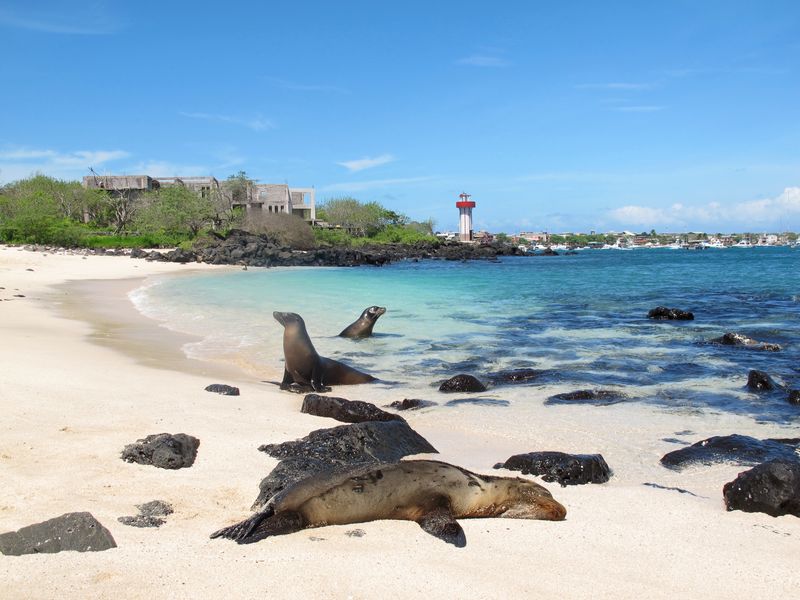
Marine iguanas snort salt water as they bask on black volcanic rocks, completely unfazed by your presence. Giant tortoises lumber through highland grasses while blue-footed boobies perform their comical mating dances just feet away from amazed observers.
These Ecuadorian islands, located 600 miles offshore, require careful planning. Most visitors explore via multi-day cruises between islands, though land-based options exist.
The dry season (June–December) offers more active wildlife, while the warm season (January–May) provides better underwater visibility for snorkeling.
But beware, visiting without certified naturalist guides is strictly prohibited to protect this fragile ecosystem!
11. Mount Fuji: Japan’s Sacred Peak
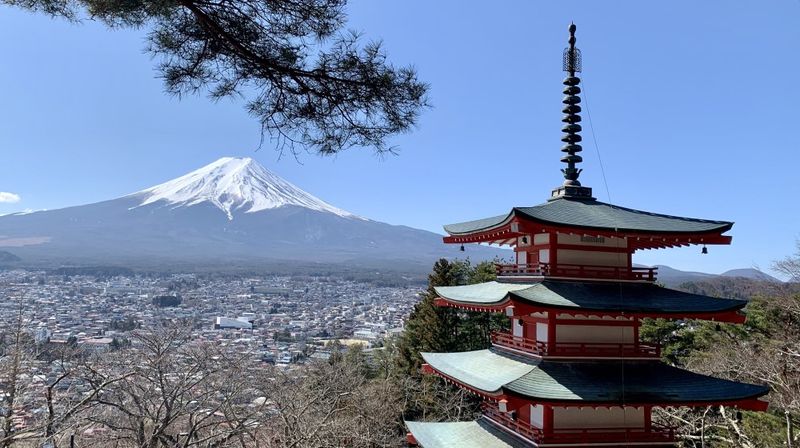
Perfectly symmetrical and often crowned with snow, this iconic volcano rises majestically above the surrounding landscape as if drawn by a master calligrapher. For centuries, artists and poets have tried to capture its essence, while pilgrims have climbed its slopes seeking spiritual enlightenment.
The official climbing season runs July-September when mountain huts operate and weather is most favorable.
Many climbers start at night to reach the summit for sunrise (called “Goraiko”). For those not climbing, the Fuji Five Lakes region offers scenery around the region and cultural experiences. Winter brings particularly clear visibility of the mountain from Tokyo on crisp days.
12. Iguazu Falls: The Devil’s Throat
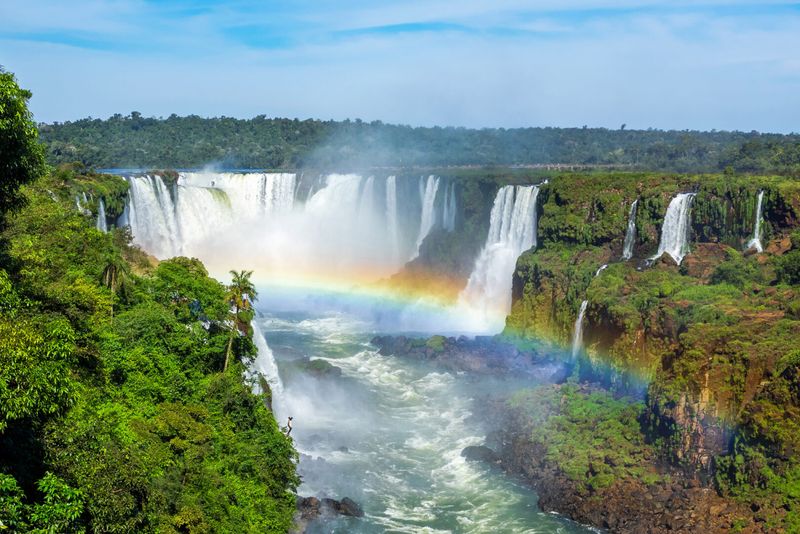
Water thunders over the horseshoe-shaped precipice with such force that a perpetual cloud of mist rises hundreds of feet into the air. Spanning the Argentina-Brazil border, this system of 275 individual cascades stretches nearly two miles, making it significantly wider than Victoria Falls.
Both countries offer distinct viewing experiences. Brazil provides panoramic vistas, while Argentina’s extensive walkways allow closer encounters with individual falls.
The Devil’s Throat, accessible from Argentina, delivers the most dramatic experience as water plunges 269 feet into a churning cauldron. February-March offers maximum water volume, while April-May and August-September provide pleasant weather with fewer crowds.
So, which side will you choose to experience this spectacle?
13. Blue Lagoon: Iceland’s Geothermal Wonder
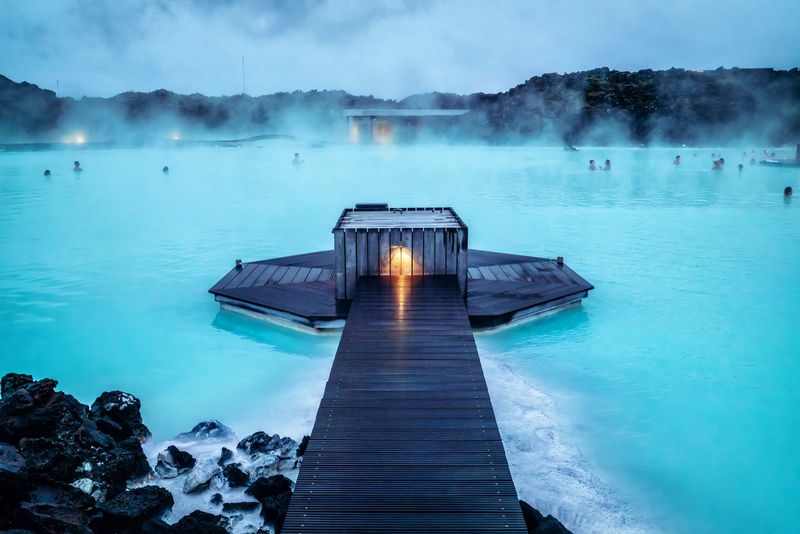
Steam rises from milky blue waters that contrast dramatically with the black lava field surroundings. This famous geothermal spa maintains a constant temperature around 100°F. It is rich in minerals like silica and sulfur, which give the water its distinctive color and reputed healing properties.
Located just 20 minutes from Keflavik International Airport, many visitors stop here directly after landing or before departure.
Pre-booking is essential, with premium packages offering private changing rooms and extras.
Visit during shoulder seasons (May-June or September-October) for fewer crowds, or experience the magical combination of warm water and snowy surroundings during winter months.
14. Lake Baikal: Siberia’s Crystal Jewel
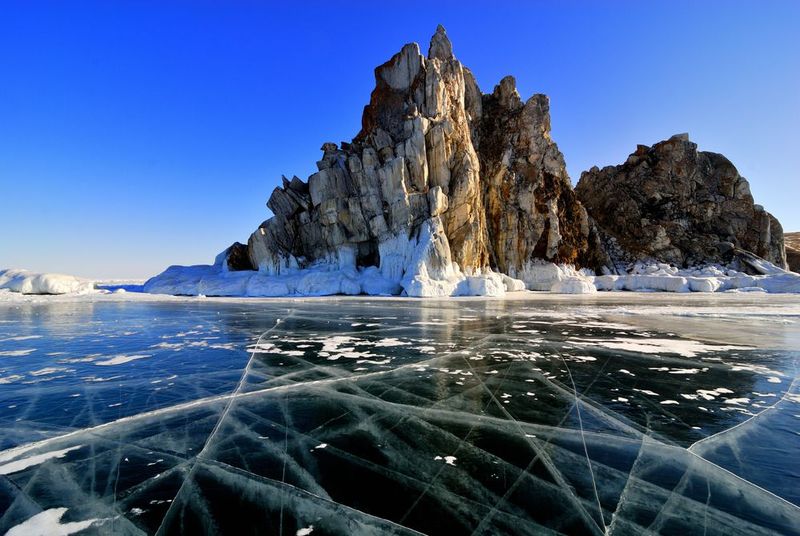
Sunlight penetrates the remarkable clarity of this ancient lake, revealing depths of over 100 feet with naked eyes. Interestingly, Lake Baikal contains about 20% of the Earth’s unfrozen freshwater, making it not only the world’s deepest and oldest lake at 25 million years but also one of the planet’s most vital freshwater reservoirs.
Summer allows exploration of shoreline villages and hiking trails, while winter transforms Baikal into a frozen wonderland with meter-thick transparent ice.
The Circum-Baikal Railway offers great views year-round. Olkhon Island, considered a shamanic power center, provides cultural insights into the indigenous Buryat people who consider the lake sacred.
15. Pamukkale: Turkey’s Cotton Castle
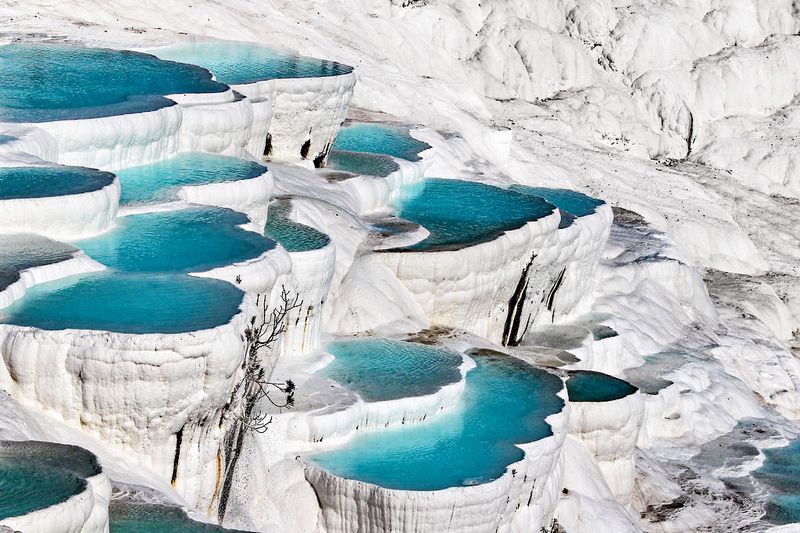
Cascading down the hillside like a frozen waterfall, these brilliant white terraces filled with mineral-rich turquoise waters create one of nature’s most surreal landscapes.
I soaked in the natural infinity pools, feeling the soothing warmth and healing powers of the calcium-laden waters wash over me. Truly, a rejuvenating experience formed over millennia as thermal waters cooled and deposited travertine.
Combined with the adjacent ruins of Hierapolis, this UNESCO site offers a blend of natural and historical wonders.
I found that visiting early morning or late afternoon helped me avoid crowds and harsh midday sun, making the barefoot walk across the terraces even more peaceful. The nearby town of Denizli is the perfect gateway, with regular buses whisking visitors to this incredible place.
